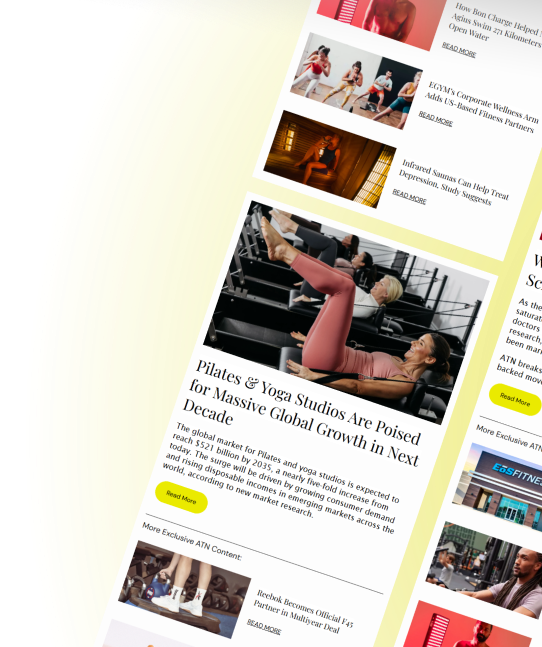
In her new book “Lift,” longtime former Wall Street Journal reporter Anne Marie Chaker explores how strength training helped her rebuild her life – and how it can do the same for women everywhere
When Anne Marie Chaker walked into a hotel fitness room during a youth hockey tournament, she was struggling with postpartum depression, the recent death of her father, the collapse of her marriage and a growing dependence on alcohol. A former Wall Street Journal reporter of 27 years, she decided to turn her observational skills inward.
“I saw this hockey mom just crushing her workout. She wasn’t skinny; she was strong. And I thought, ‘That’s what I want,’” Chaker told Athletech News in an interview about her new book, Lift: How Women Can Reclaim Their Physical Power and Transform Their Lives. “That single moment changed everything.”
What followed was an unlikely evolution. Chaker began working with the woman’s coach, changed how she ate, took up strength training and eventually entered a bodybuilding competition, earning her pro card.
“It was never about aesthetics,” she said. “It was about saving my life.”
Chaker’s new book, recommended by Arnold Schwarzenegger and Mel Robbins, among other celebrities, traces her journey out of emotional and physical depletion and into strength. But it also investigates the forces that have led generations of women to fear muscle and idolize thinness.
“Historically, every time women gained power, a new beauty ideal came along to shrink us,” she explained. “Post-suffrage: flappers. Second-wave feminism: Twiggy. And now, as women rise professionally and politically, here comes GLP-1 drugs and a resurgence of early-2000s ‘thinspo’ culture. I’m not here to shame anyone’s choices. But I do think we need to ask: whose standards are we chasing? And what’s the cost?”

As strength training surges in popularity among women, Chaker sees an opportunity for gyms and fitness operators to meet the moment.
“When I started lifting in 2019, I was one of the only women in the weight room,” she recalled. “Now it’s at least 50/50. The interest is there. The motivation is there. But gyms need to be more intentional about how they welcome and support women, especially those in midlife who are dealing with perimenopause, caregiving, or coming back from burnout.”
Her recommendations? Audit your language and visuals. Create beginner-friendly strength programming that isn’t cardio-first. Offer education around protein, recovery, and muscle maintenance. And, importantly, normalize strength as a wellness baseline, not a niche goal.
“Women don’t need to chase gimmicks,” she said. “They need consistent programming, smart coaching, and the permission to take up space. There’s fascinating data showing that women have more fatigue-resistant muscles than men. We can hold contractions longer. We outlive men. We’re built for endurance and resilience. Yet the fitness industry, and society, have long taught us to prioritize shrinking over strengthening.”
For wellness brands, gym operators and fitness professionals, Chaker sees a pivotal opportunity.
“There is real business potential in catering to women who are finally saying, ‘I want more for my body than constant deprivation,’” she said. “But it has to be authentic.”
That includes investing in strength-focused education, coaching certifications that emphasize menopause and aging, and marketing that prizes capability over aesthetics.
“We were never meant to be thin,” Chaker said. “We were meant to be strong. And the more we embrace that, not just as individuals, but as an industry, the more we can help women come home to themselves.”
